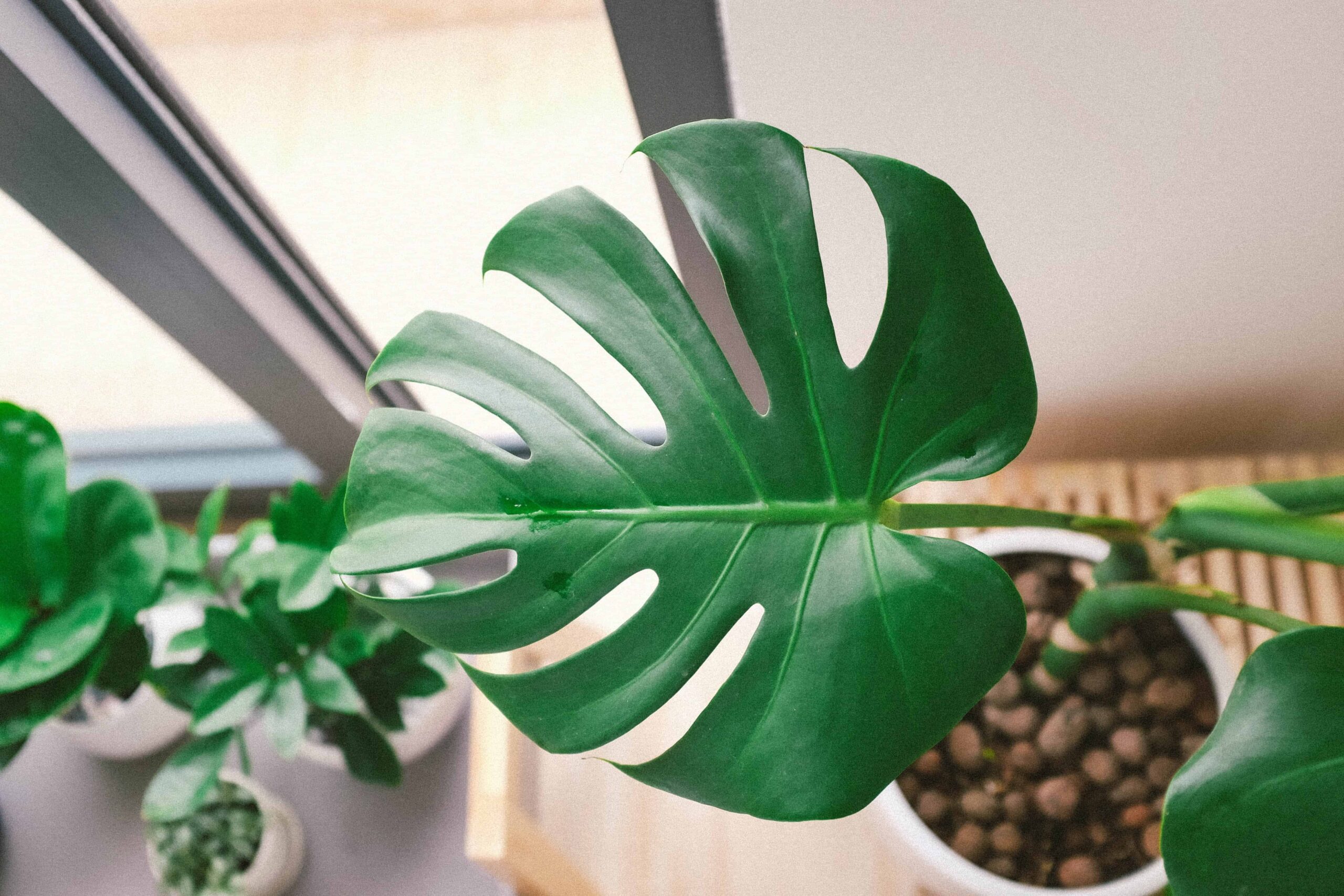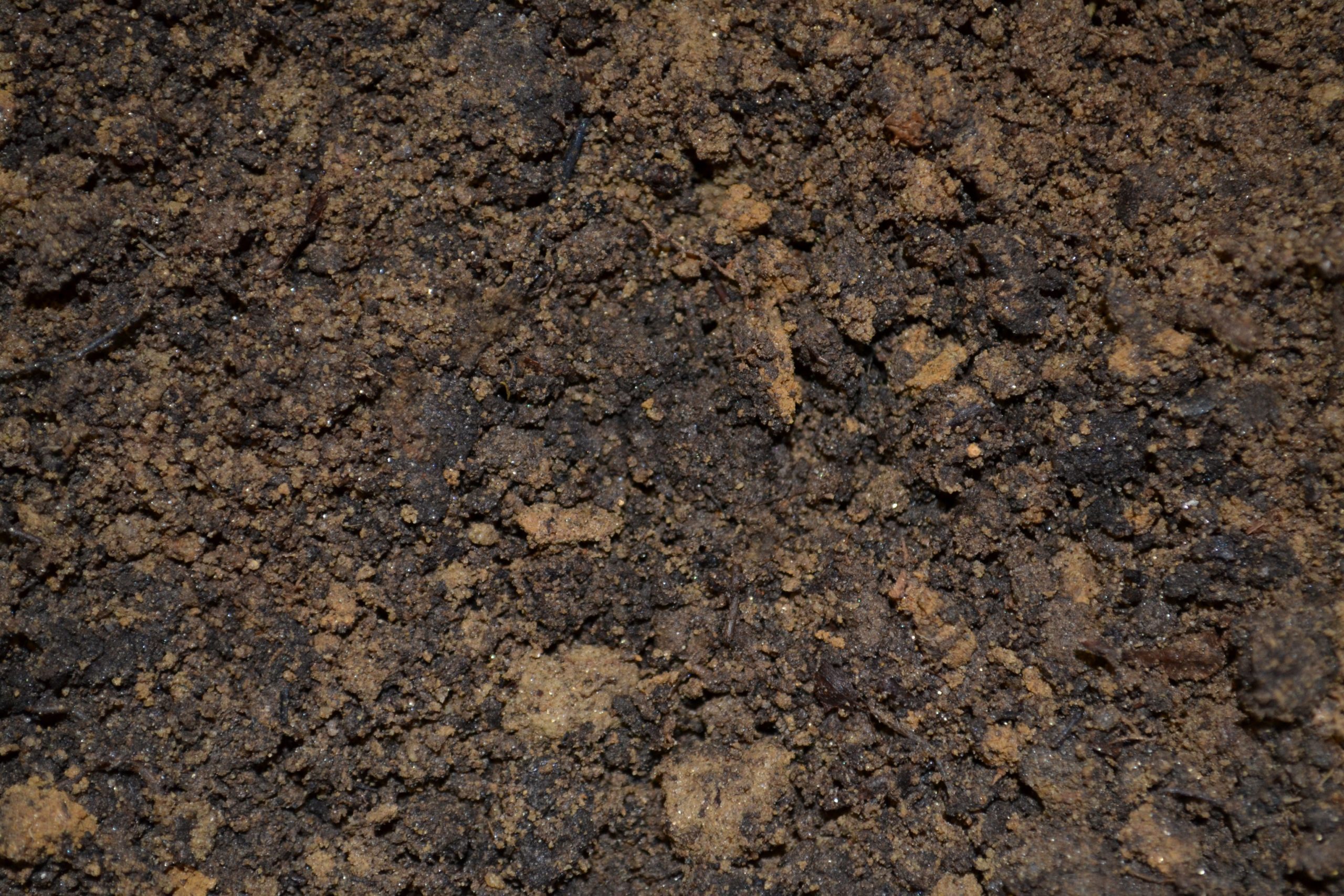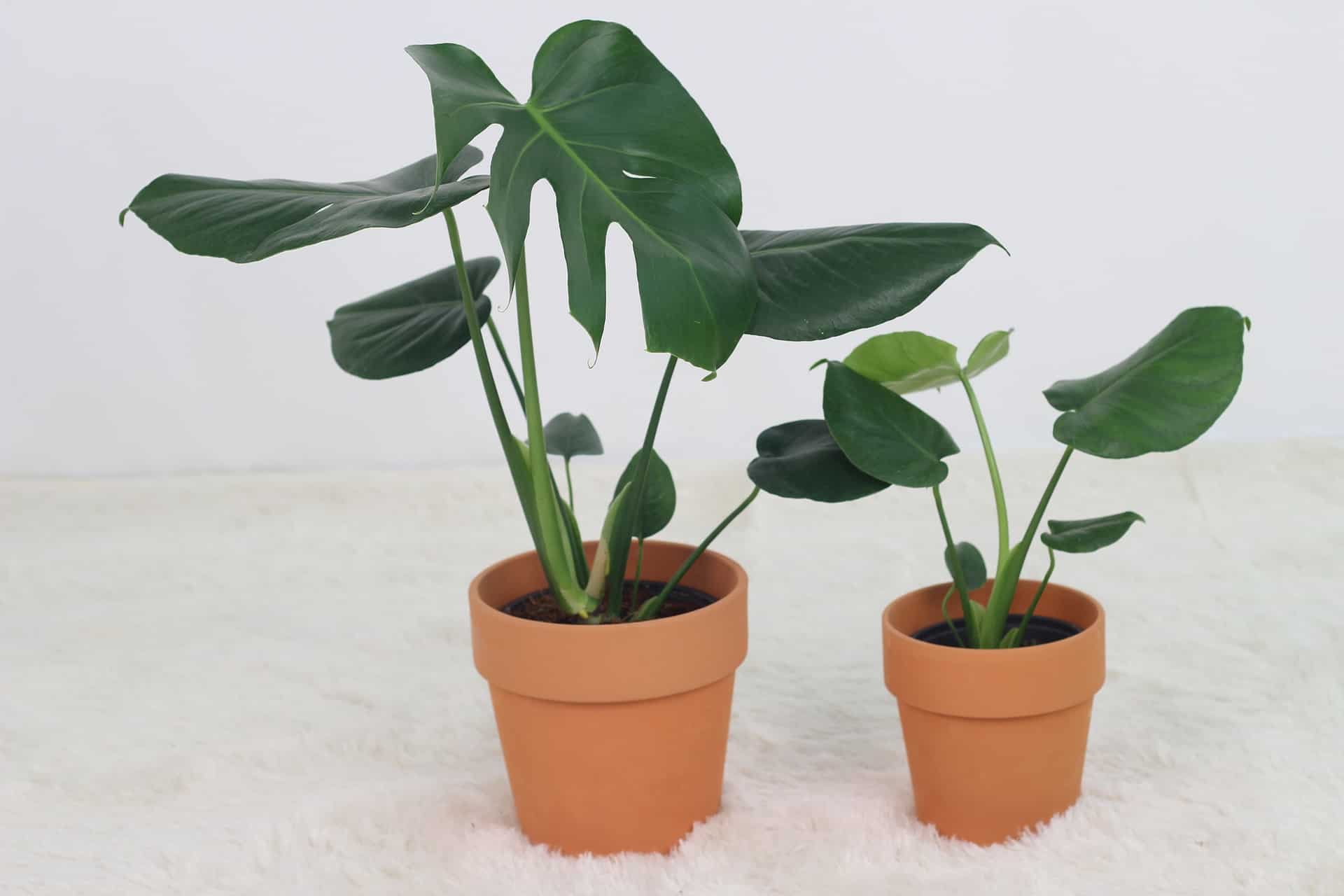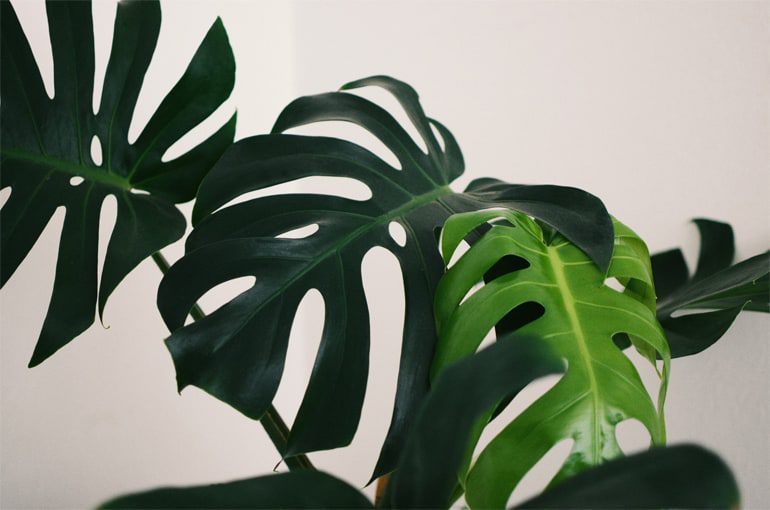Does my monstera need more light?
One of the most important parts of raising a beautiful, healthy monstera is giving it the right light. This means learning to recognize the signs that your monstera needs more light.
Monsteras like bright, indirect sunlight and will usually be happiest near a bright window where the sun’s rays don’t shine directly on the leaves.
The best place for a monstera is often in an east-facing window or near a south-facing window. North-facing windows may not be bright enough (but they’re far better than nothing!) and a west-facing window might let too much hot, direct afternoon light through.
If your monstera isn’t getting enough light, it will tell you! Here are the telltale signs that your monstera needs more light.
Signs Your Monstera Needs More Light
Sign #1: Your monstera may need more light if the leaves won’t split.

If your monstera is more than 3 years old, you should start seeing some fenestration, or splitting, in your leaves.
After all, that’s one of the most iconic characteristics of monsteras—and why most of us have them!
But your monstera needs light to do this. Hole-less mature leaves are a sure sign that your monstera would be happier with more light .
Sign #2: If the monstera soil takes forever to dry out it may need more light.

Monsteras require a moderate amount of water, but they don’t like wet roots. You should be watering when the top inch or two of soil feels dry to the touch. (Poke your finger in the soil. If the soil is dry to the second knuckle, it’s time to give your plant a drink!)
Sunlight helps your monstera use water efficiently, but in dark conditions, the soil can stay wet for far longer than is healthy for the roots.
If you’re going more than 10 days in between waterings because the soil still feels wet, you might want to give your plant some more light in addition to adjusting the amount of water you give it. (Speaking of soil, we recommend this potting mix for your monstera.)
Sign #3: Give your monstera more light if you see leaf discoloration.

If you notice dark brown spots or yellowing on your monstera’s leaves, there might be a few things going on.
First, you’re probably giving your plant too much water. But as we learned in the last point, light and over-watering issues often go hand-in-hand because the soil can’t dry out in low light conditions.
If scaling back on the amount of water you give your monstera doesn’t fix the problem, you may also want to move it closer to a window or pick a brighter window altogether.
Sign #4: If your monstera is growing slowly it may need more light.

Monsteras, especially monstera deliciosa, are known for growing into, well, monsters!
Monstera deliciosa in particular can grow up to 10 feet indoors, and it doesn’t take all that long to get there.
If you notice that your monstera hasn’t grown larger or put out new leaves for a few months (especially during the spring or summer), it might not be getting the light it needs to produce energy to support that new growth.
But what if my house isn’t light enough?
Sometimes we just can’t seem to find the right spot for our plants where they get plenty of light but don’t get scorched by direct light. If you have this problem and don’t have the right lighting conditions for your plant, there’s a solution: grow lights!
You can find tons of different lights for your monstera and other plants that need bright, indirect light. Try a grow light bulb in a regular lighting fixture for a more aesthetically pleasing option!
Here are some of our favorite grow bulbs.
You can grow a big, healthy monstera no matter what light conditions you have to work with. The trick is to make your space work for you and to know when your monstera is asking for more light!
To learn more:
- Sign up for our free Ultimate Monstera Webinar.
- Subscribe to our newsletter.
- Click to join our community on Facebook: Monstera Plant Resource Group.
- Read our Ultimate Monstera Watering Guide here.
- Be sure to grab your essentials here: Monstera Plant Food, 3-in-1 Moisture Meter, Premium Potting Soil, Houseplant Leaf Armor (which protects your houseplant from bacteria, fungus, and insects—and also cleans and adds shine to its leaves!)
- Looking to shop for plants online? Our trusted partners at Houseplantshop.com grow high-quality plants here in California and ship directly to you. Shop online now!





